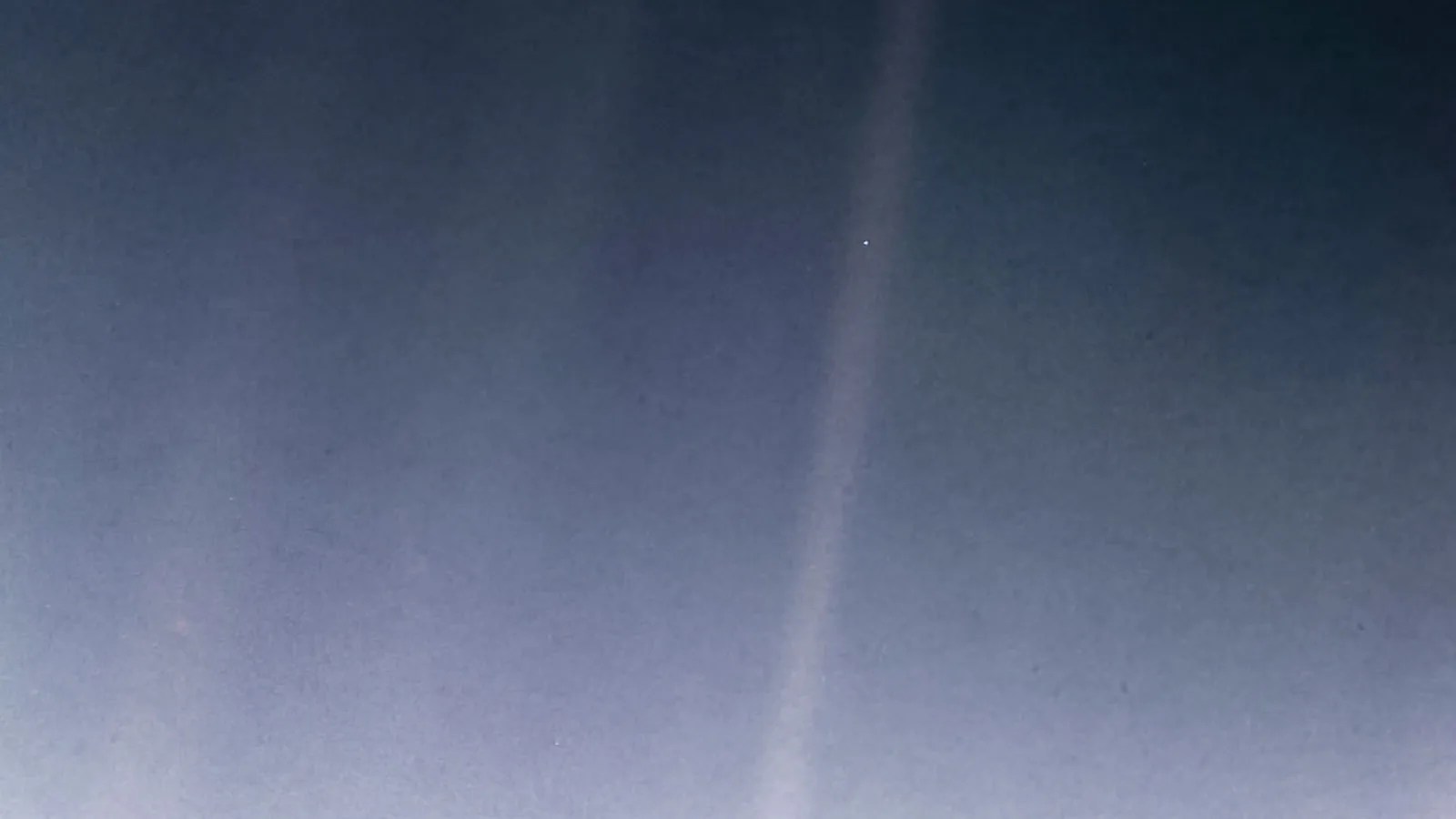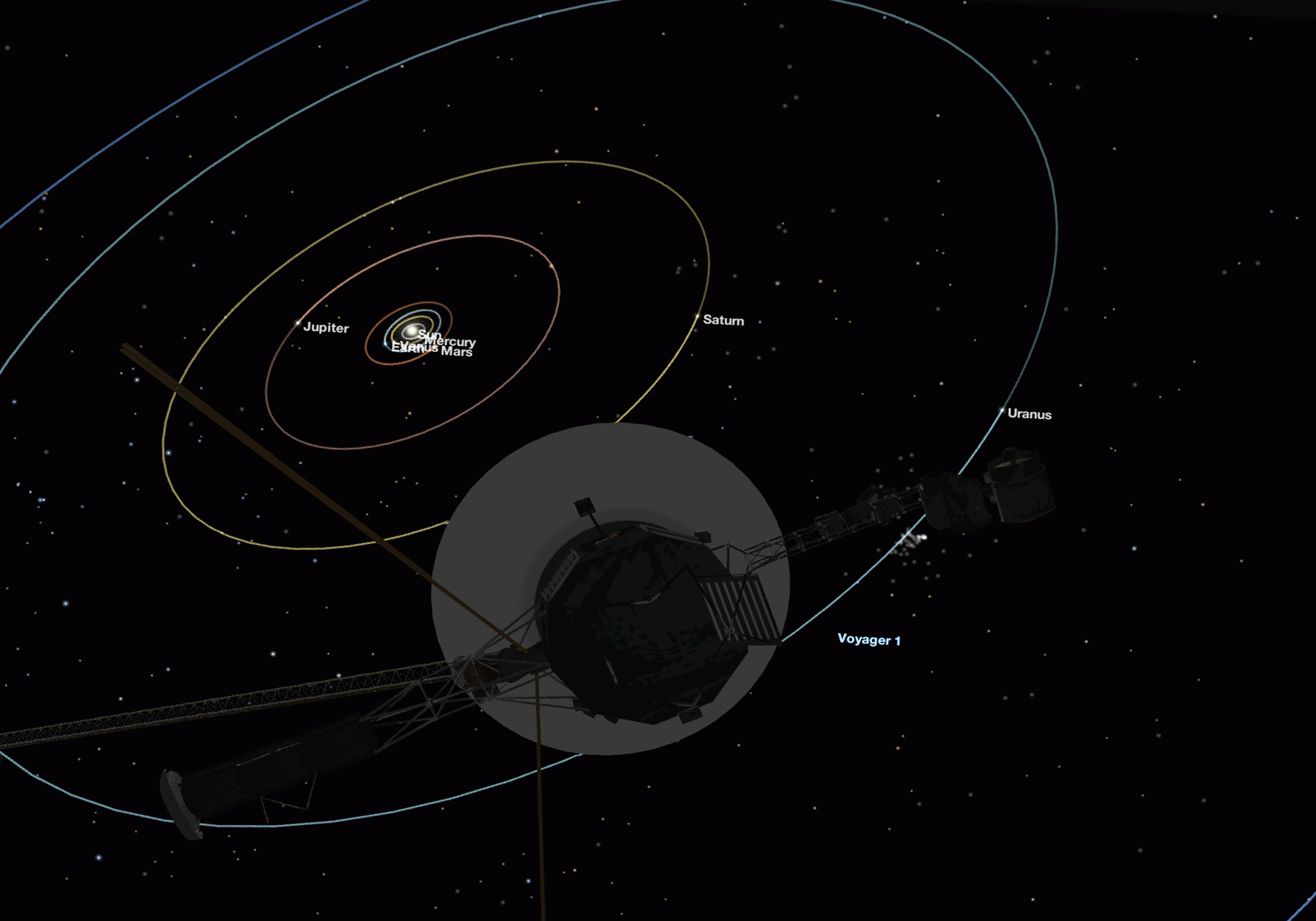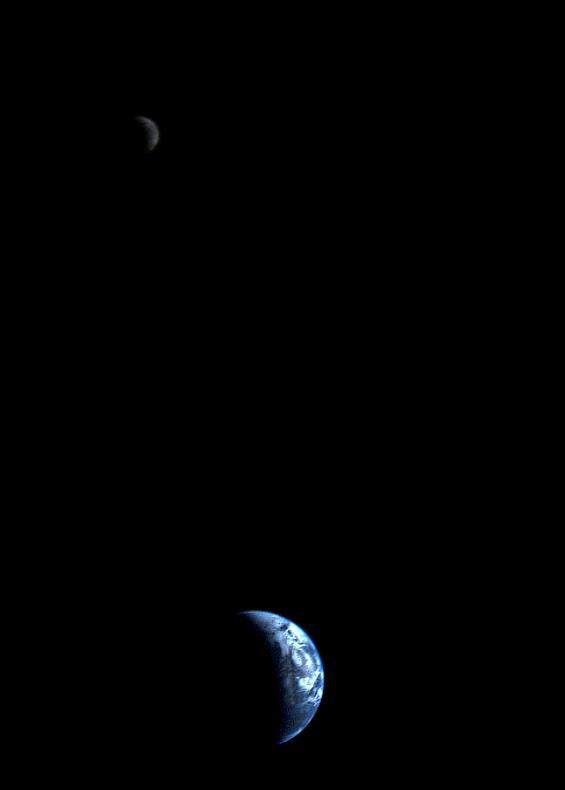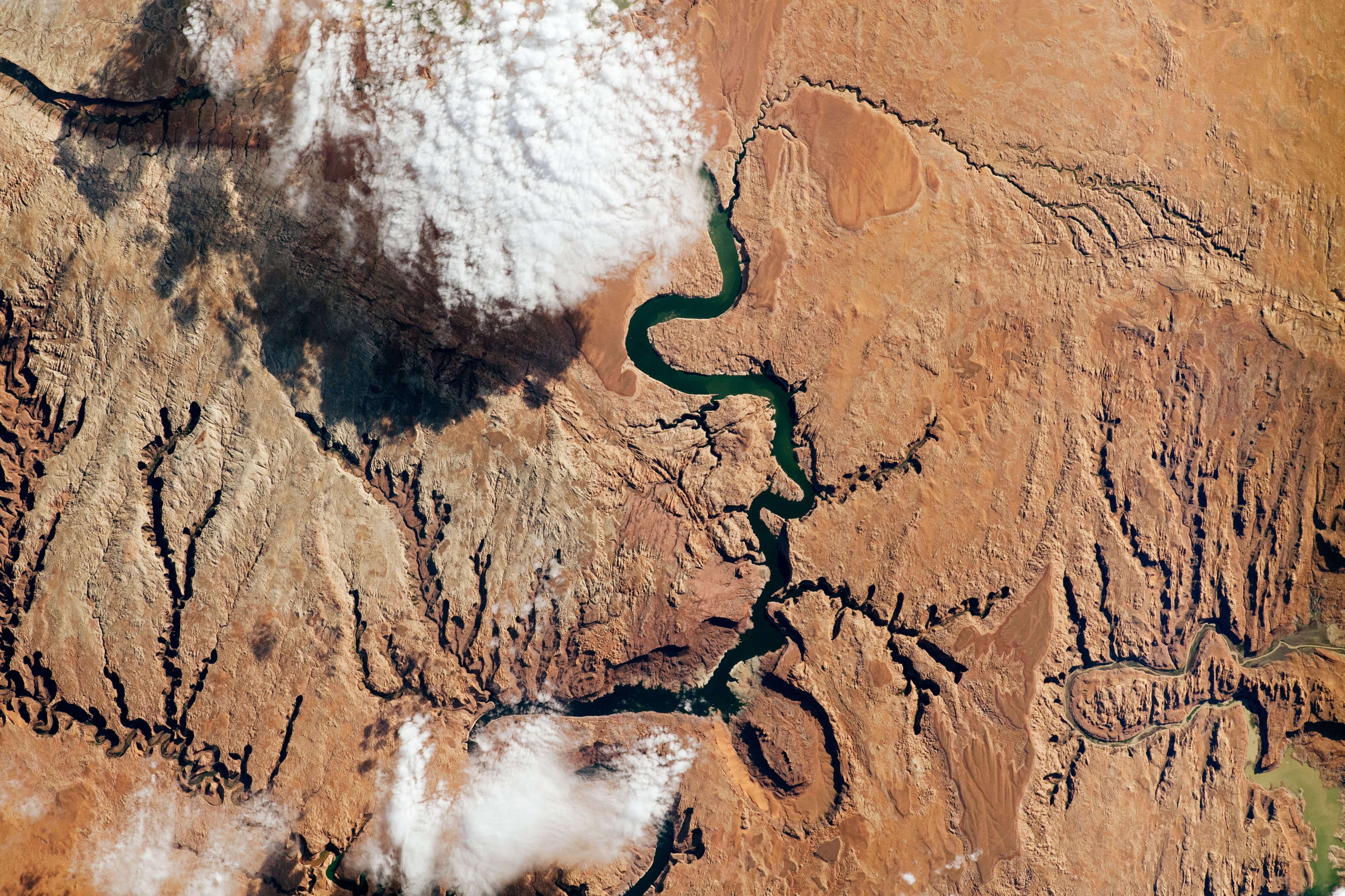5 min read

Thirty years ago on Feb. 14, 1990, NASA’s Voyager 1 spacecraft sent home a very special Valentine: A mosaic of 60 images that was intended as what the Voyager team called the first “Family Portrait” of our solar system.
The spacecraft was out beyond Neptune when mission managers commanded it to look back for a final time and snap images of the worlds it was leaving behind on its journey into interstellar space.
It captured Neptune, Uranus, Saturn, Jupiter, Earth and Venus. A few key members didn’t make the shot: Mars was obscured by scattered sunlight bouncing around in the camera, Mercury was too close to the Sun and dwarf planet Pluto was too tiny, too far away and too dark to be detected. But the images gave humans an awe-inspiring and unprecedented view of their home world and its neighbors.
One of those images, the picture of Earth, would become known as the “Pale Blue Dot.” The unique view of Earth as a tiny speck in the cosmos inspired the title of scientist Carl Sagan's book, "Pale Blue Dot: A Vision of the Human Future in Space,"
But the image almost didn’t happen.
Here are 10 things you might not know about Voyager 1’s famous Pale Blue Dot photo.
Neither the “Family Portrait” nor the “Pale Blue Dot” photo was planned as part of the original Voyager mission. In fact, the Voyager team turned down several requests to take the images because of limited engineering resources and potential danger to the cameras from pointing them close to the Sun. It took eight years and six requests to get approval for the images.
Voyager 1 remains the first and only spacecraft that has attempted to photograph our solar system. Only three spacecraft have been capable of making such an observation: Voyager 1, Voyager 2 and New Horizons. (Pioneer 10 and Pioneer 11 — the other two spacecraft headed into interstellar space — had similar vantage points, but technical challenges prevented them from getting such a shot.)

The Voyager imaging team wanted show Earth’s vulnerability — to illustrate how fragile and irreplaceable it is — and demonstrate what a small place it occupies in the universe. Earth in the image is only about a single a pixel, a pale blue dot.
The image contains scattered light that resembles beams of sunlight, making the tiny Earth appear even more dramatic. In fact, these sunbeams are camera artifacts that resulted from the necessity of pointing the camera within a few degrees of the Sun.
Voyager 1 was 40 astronomical units from the Sun at the time so Earth appeared very near our brilliant star from Voyager's vantage point. One astronomical unit is 93 million miles, or 150 million kilometers That one of the rays of light happened to intersect with Earth was a happy coincidence.
Look again at that dot. That's here. That's home. That's us.

Carl sagan
"Pale Blue Dot: A Vision of the Human Future in Space."
The prominent planetary scientist Carl Sagan (1934-1996) — a member of the Voyager imaging team — had the original idea to use Voyager’s cameras to image Earth in 1981, following the mission's encounters with Saturn. Sagan later wrote in poetic detail about the image and its meaning in his book, "Pale Blue Dot: A Vision of the Human Future in Space."
Voyager 1 powered up its cameras for the images on Feb. 13 and it took three hours for them to warm up. The spacecraft’s onboard tape recorder saved all the images taken, for later playback to Earth.
The images of Earth snapped by Voyager 1 captured light that had left our planet five hours and 36 minutes earlier. (This was, of course, reflected sunlight that had left the Sun eight minutes before that.)
Voyager 1 was so far from Earth it took several communications passes with NASA's Deep Space Network, over a couple of months, to transmit all the data. The last of the image data were finally downloaded on Earth on May 1, 1990.

Voyager 1 also took the first image of the entire Earth and Moon together near the start of its mission on Sept. 18, 1977. The images were taken 13 days after launch at a distance of about 7.3 million miles (11.66 million kilometers) from Earth.
After taking the images for “The Family Portrait” at 05:22 GMT on Feb. 14, 1990, Voyager 1 powered down its cameras forever. As of early 2020 the spacecraft is still operating, but no longer has the capability to take images.
Acknowledgements: Amanda Barnett, Phil Davis and Preston Dyches contributed to this story. Some of the information in this article came from the account of the solar system family portrait detailed in Kosmann, Hansen and Sagan, "The Family Portrait of the Solar System: The last set of images taken by Voyager 1 and the fascinating story of how they came to be," 70th International Astronautical Congress (IAC), IAC-19-F4.1.8, 2019.







